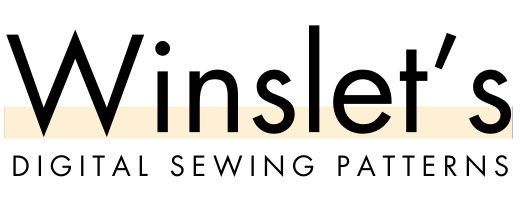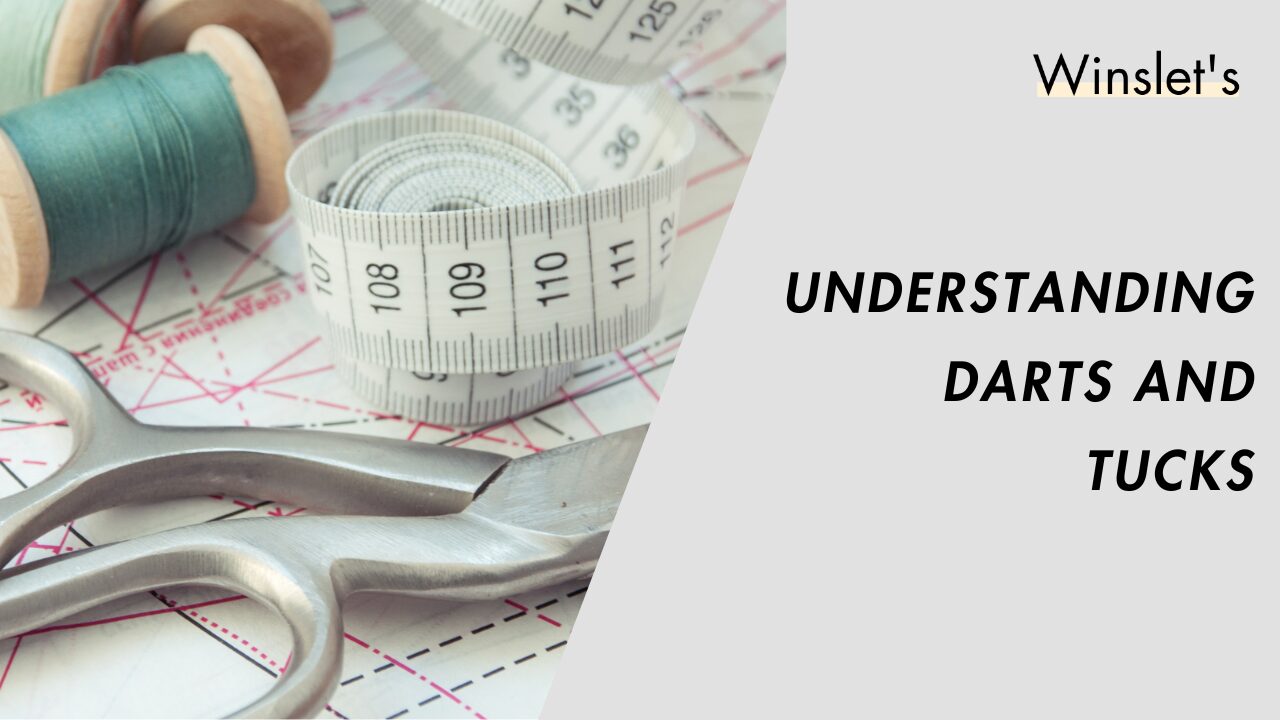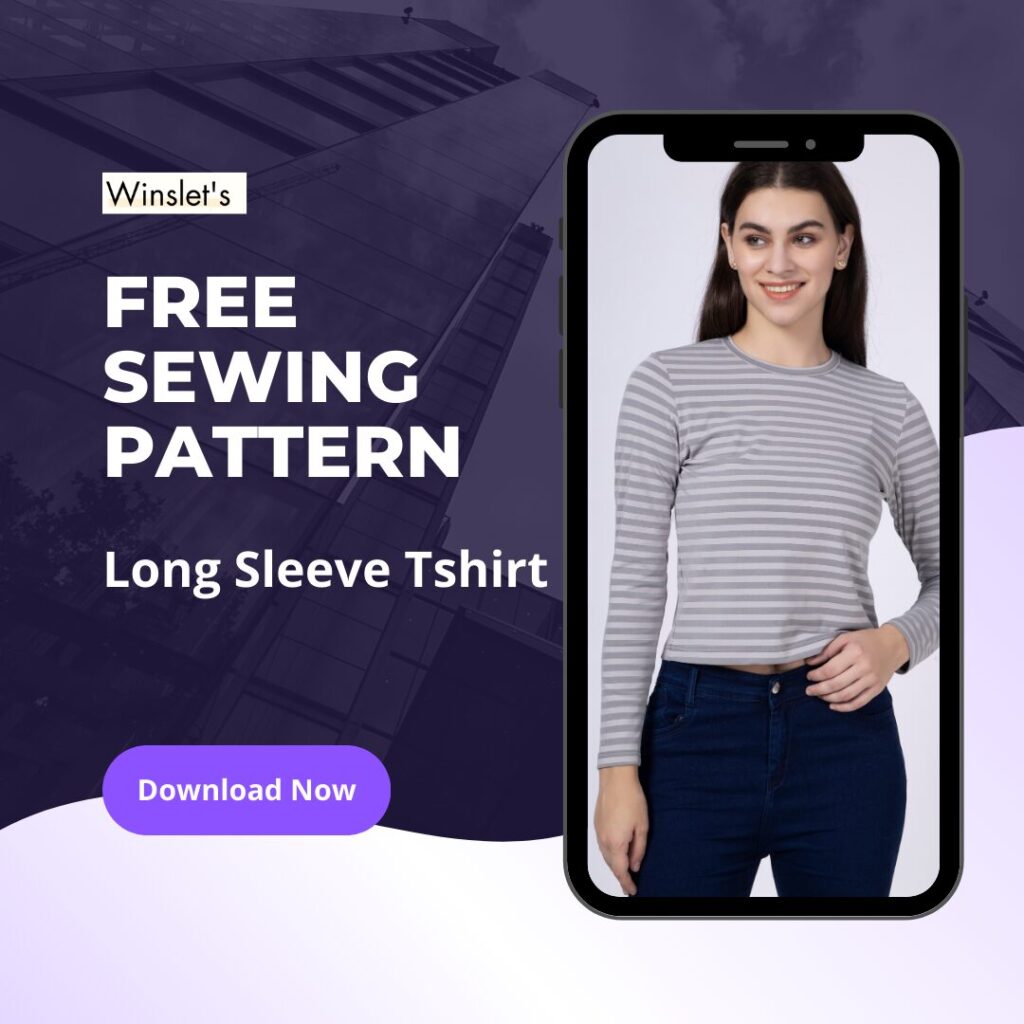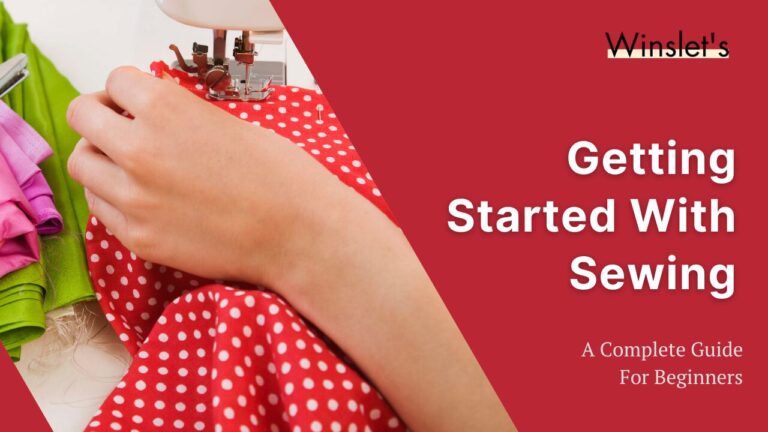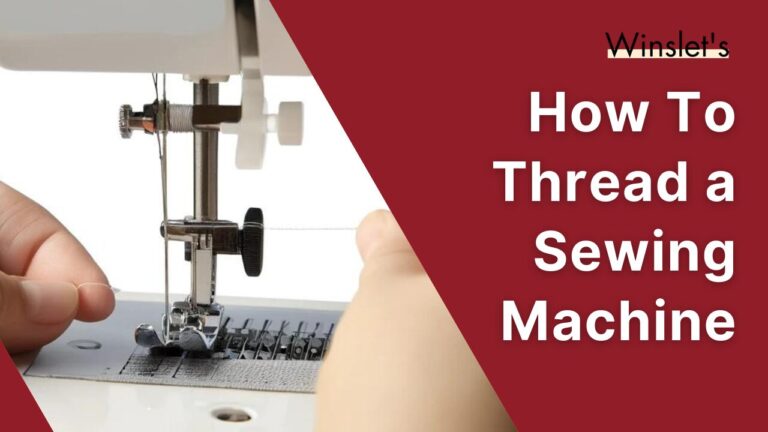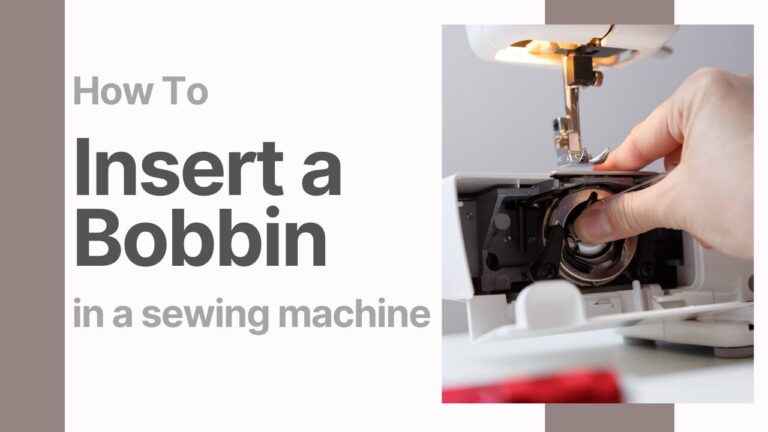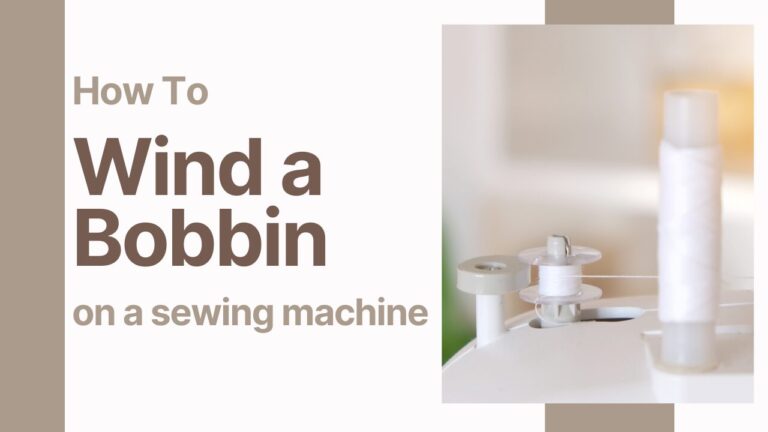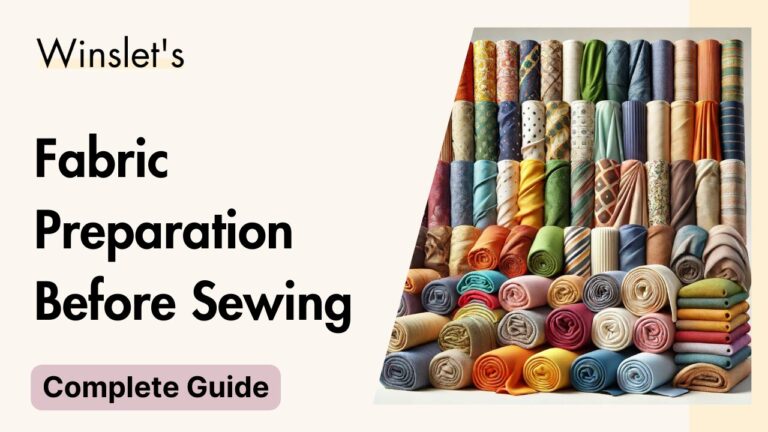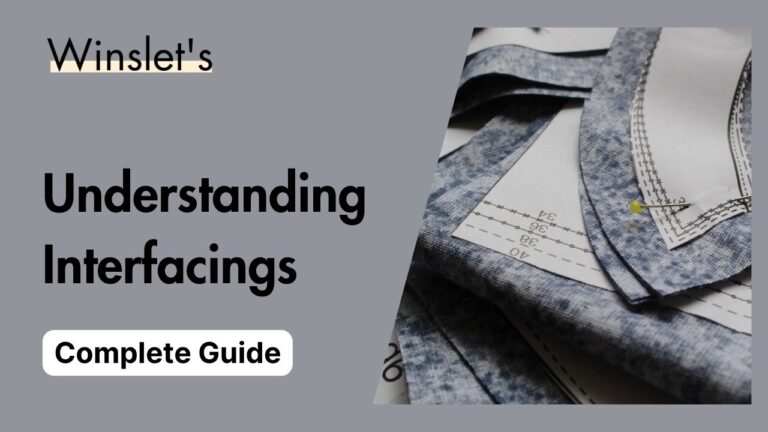Mastering Darts & Tucks – How to Shape and Style Your Sewing Projects
One of the key elements of achieving a well-fitted, professional-looking garment is understanding darts and tucks. These two techniques may seem similar at first glance, but they serve different purposes in sewing.
- Darts are used to shape fabric and create contouring in fitted garments by removing excess fabric in a controlled way.
- Tucks are decorative or structural folds in fabric that can add texture, fullness, or design elements to your sewing projects.
Mastering darts and tucks can elevate your sewing skills, helping you create structured bodices, elegant pleats, and well-fitted clothing. This guide will walk you through the differences between these techniques, their uses, and essential sewing tips to ensure your garments look polished and stylish.
What Are Darts?
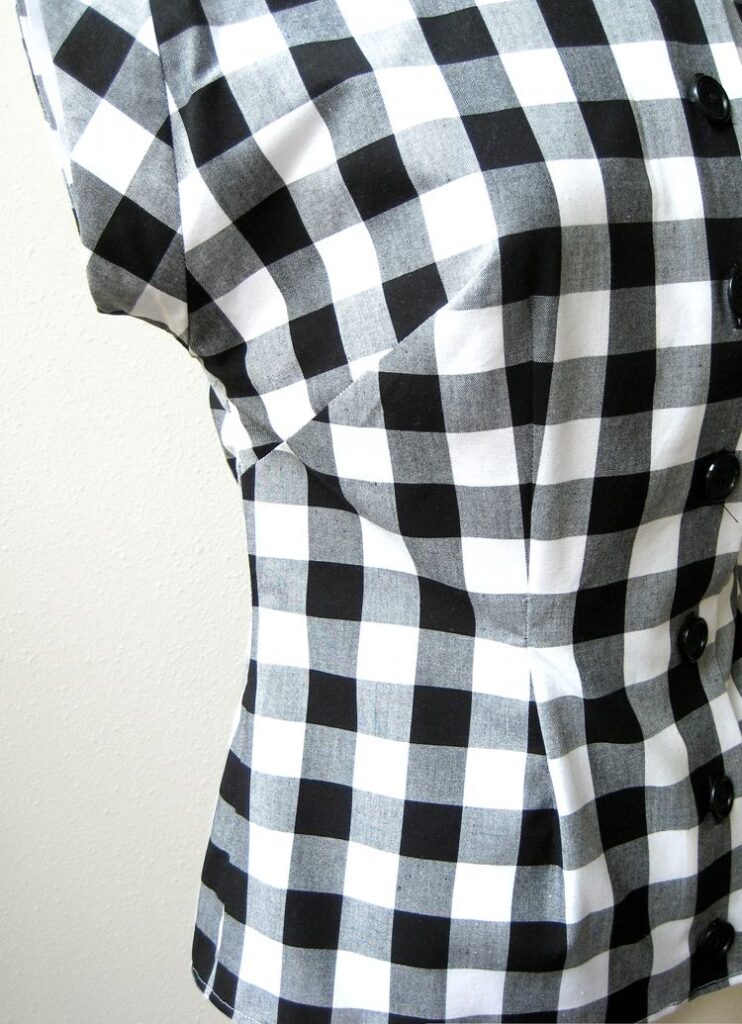
Source: darts in sewing patterns
A dart is a V-shaped, folded wedge of fabric that’s sewn into garments to create contour and shape. Think of darts as the magic behind the tailored look of fitted garments. They’re usually found in areas that need to follow the curves of the body, such as:
- Bust
- Waist
- Hip
- Shoulder
Darts help take a two-dimensional piece of fabric and make it fit the three-dimensional shape of the body.
Types of Darts
- Single-Pointed Darts: These are the most common darts, starting wide at one end and tapering off at a point. You’ll typically find these on the bust or waist.
- Double-Pointed Darts (Fish-eye Darts): These darts are narrow at both ends and are commonly used to shape areas like the waist in dresses or jackets.
- Curved Darts: Adding a more rounded shape, these darts are great for garments that need a smoother fit around curves like the bust or hips.
How to Sew a Perfect Dart
- Use a fabric marker or tailor’s chalk to transfer the dart markings from your pattern to the fabric.
- Fold your fabric along the center of the dart, ensuring the edges are aligned.
- Start sewing from the widest point, tapering down toward the tip of the dart. Secure with a backstitch at the start, but avoid backstitching at the tip to prevent puckering.
- Always press darts to one side. For bust darts, press downward; for waist darts, press toward the center.
What Are Tucks?

Source: Tucks in sewing patterns
Tucks are folds in fabric that are sewn into place to add decorative details or shape. Unlike darts, tucks don’t taper to a point, and they can be purely decorative or functional in adding volume to specific areas.
Types of Tucks
- Pin Tucks: These are very narrow folds, usually sewn closely together. Pin tucks add a delicate, decorative texture to blouses, dresses, and children’s wear.
- Spaced Tucks: These are evenly spaced tucks that are sewn across a garment, often used in skirts or tops to add structure or volume.
- Blind Tucks: Tucks where the fabric folds conceal the stitching, giving a more subtle, textured look.
How to Sew Tucks
- As with darts, you’ll want to transfer the markings from your pattern onto the fabric.
- Fold the fabric along the lines where the tuck will be sewn. Press to hold the fold in place.
- Sew a straight stitch along the fold, making sure to keep the depth of the tuck consistent.
- Once the tucks are sewn, press them to one side or outward, depending on the desired look.
When to Use Darts vs. Tucks
- Darts: Best for shaping fitted garments, particularly in areas where the fabric needs to contour to curves, like the bust or waist.
- Tucks: Ideal for adding volume, texture, or subtle structure to garments. Use tucks when you want to keep fabric flat but still want to introduce a little shaping.
Summary : Mastering Darts & Tucks in Sewing
✔ Darts vs. Tucks – Key Differences
- Darts are sewn folds that taper to a point, used for shaping fabric to the body’s curves.
- Tucks are evenly folded and stitched sections of fabric that add volume or decorative detail without shaping.
✔ Common Types of Darts & Their Uses
- Single-Point Dart – Seen in fitted bodices and dresses.
- Double-Point (Fish-Eye) Dart – Used in structured tops and dresses with shaping at both ends.
- French Dart – Curved for a softer fit, often found in blouses.
- Bust & Waist Darts – Essential for contouring the garment to fit the body’s shape.
✔ Common Types of Tucks & Their Uses
- Pin Tucks – Narrow, decorative tucks used in heirloom sewing and blouses.
- Box Pleats – Wide, structured tucks used in skirts and dresses.
- Spaced Tucks – Evenly spaced folds adding dimension to a garment.
- Corded Tucks – Raised tucks with cord inside for texture, common in decorative sewing.
✔ Real-Life Applications of Darts and Tucks
- Darts: Used in tailored garments like dresses, pants, and jackets for a sleek fit.
- Tucks: Common in loose-fitting blouses, skirts, and artistic fashion designs.
✔ Troubleshooting Sewing Issues
- Darts Puckering → Clip seam allowance & press properly.
- Tucks Looking Uneven → Mark lines carefully before stitching.
- Fabric Bulk in Darts → Reduce excess fabric by trimming and pressing seams open.
By understanding and applying darts and tucks correctly, you can create garments that fit beautifully and look professionally sewn.
If you are a sewist, have a look at our recommended sewing machines: beginner sewing machines, sewing tools and notions, coverstitch sergers and overlock machines, embroidery machines and quilting sewing machines, sewing practice sheets and sewing project planner.
If you are looking for sewing patterns, here are some great options: Activewear Sewing Patterns, Plus Size Sewing Patterns, Outerwear Sewing Patterns, Jumpsuit Sewing Patterns, Coord Set Sewing Patterns, Pants Sewing Patterns, Shorts Sewing Patterns, Skirts Sewing Patterns, Dress Sewing Patterns, Top Sewing Patterns, Bodycon Sewing Patterns, Evening Dresses Sewing Patterns, Loungewear Sewing Patterns, Cottagecore Sewing Patterns, Free Sewing Pattern.
Happy Stitching.
